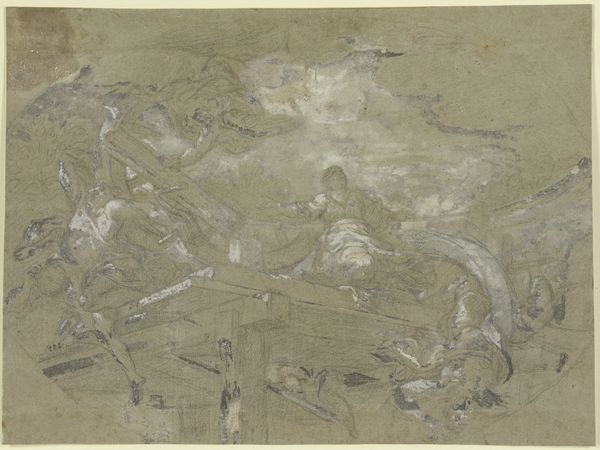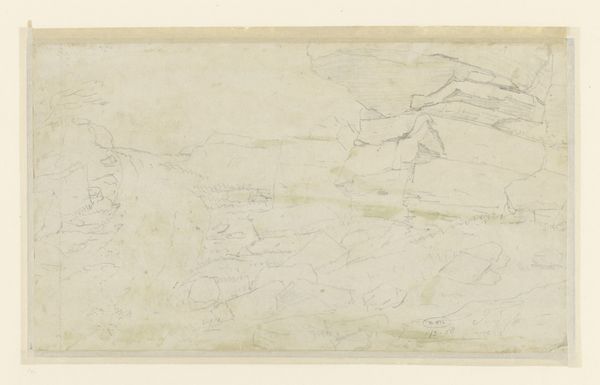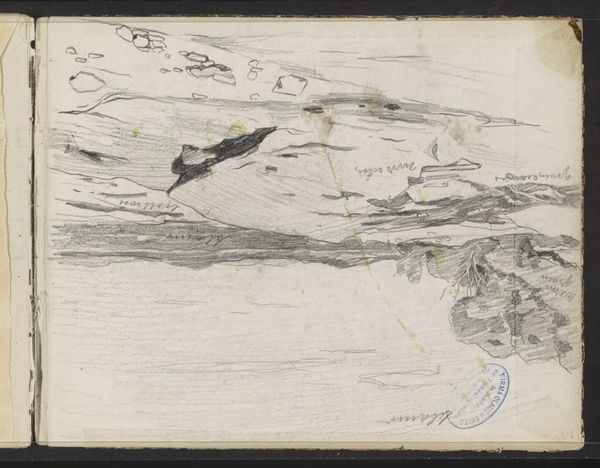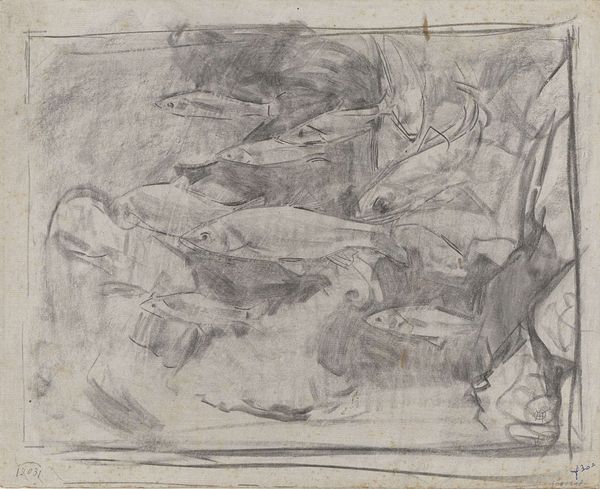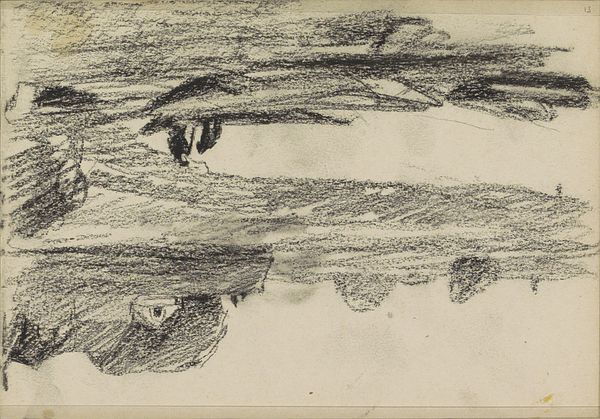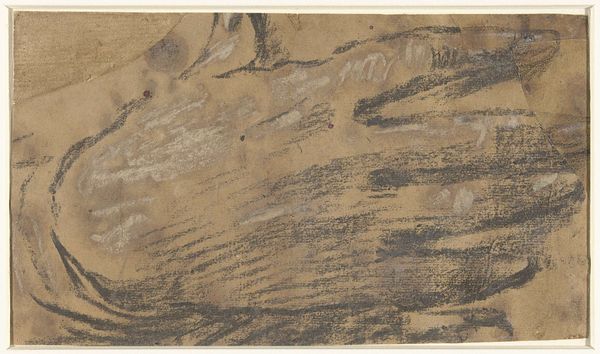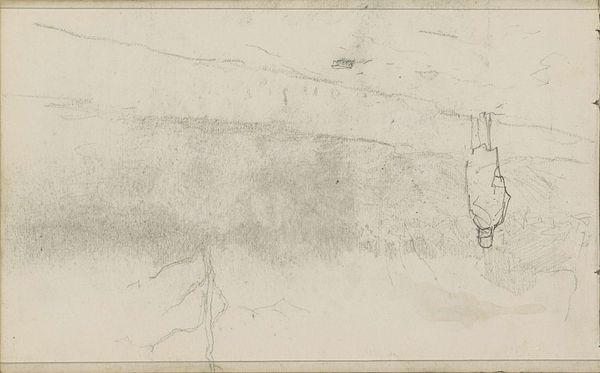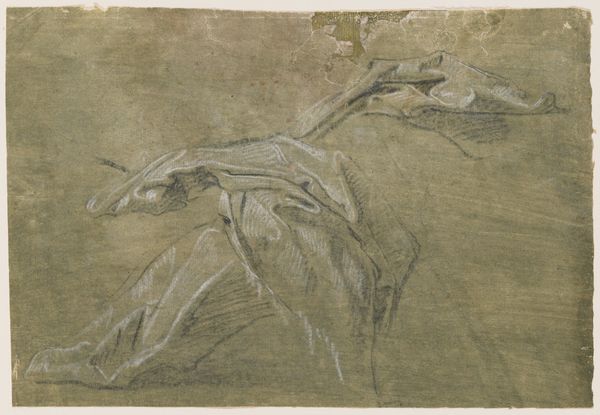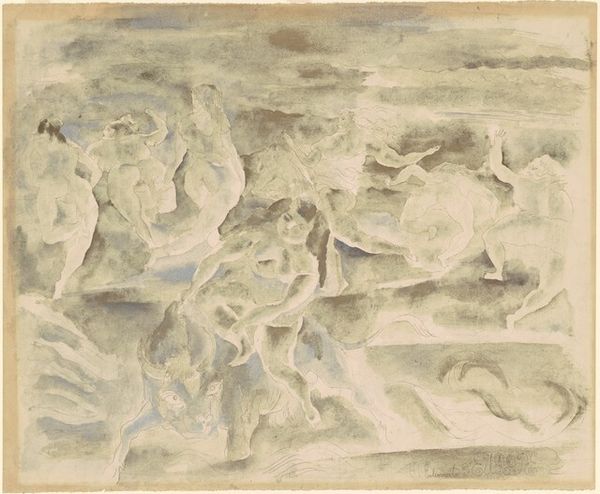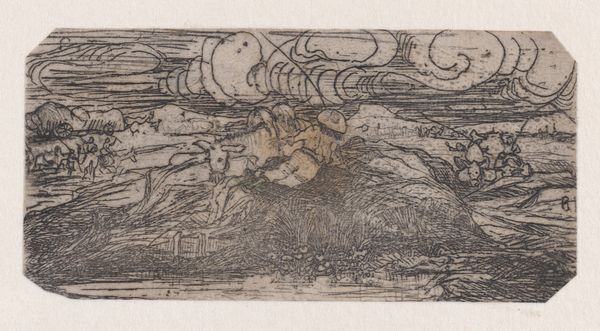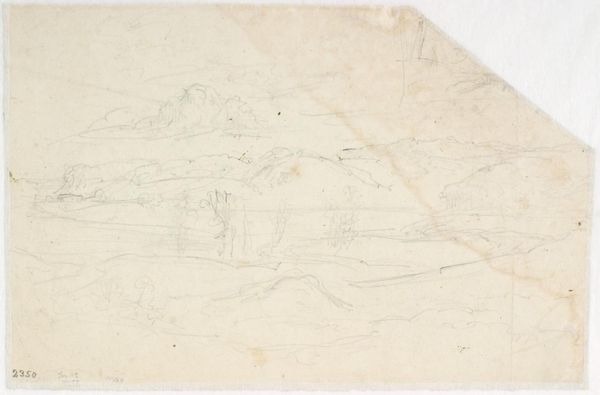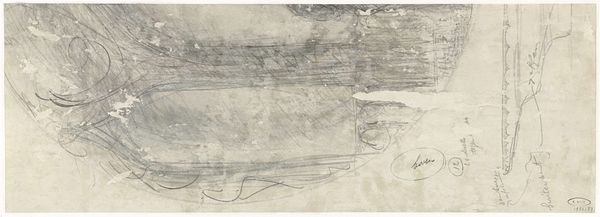
drawing, pencil
#
drawing
#
landscape
#
forest
#
pencil
#
realism
Copyright: Rijks Museum: Open Domain
Editor: This is "Haagse Bos," a pencil drawing from 1868 by Johannes Tavenraat. It's a landscape study of a forest. It feels very textural to me, almost like you can feel the different planes and surfaces of the forest floor, despite being rendered so simply. What strikes you about the composition? Curator: It is intriguing how Tavenraat manipulates the viewer's perspective through purely formal means. Note how the layered, horizontal strokes suggest depth, pulling the eye into the composition. This technique, reminiscent of structuralist film theory, relies on the viewer's active participation in constructing the image's meaning. The density of the pencil marks also seems to indicate volume and space without reliance on traditional shading techniques. Editor: I see what you mean about the horizontal strokes. It's like a series of shelves receding into the distance. Does the limited tonal range affect your reading of the drawing? Curator: Precisely. The monochromatic palette allows us to focus on the interplay of line and form. Semiotically speaking, the absence of colour directs our attention to the signifiers within the drawing itself – the varying weight of the lines, their directionality, and the relationships between them. These elements operate as signs, conveying the essence of the forest. Editor: So, instead of relying on color to create realism, he’s using line and form? Curator: Indeed. He privileges a formal vocabulary, presenting a structural representation of a landscape rather than a mimetic imitation. The effectiveness of his approach is measured through its ability to convey the essence of “forestness” rather than its representational accuracy. This drawing isn’t necessarily *of* a place as much as *about* space. Editor: That makes a lot of sense. I didn’t consider it in that light. Thanks for sharing your perspective. Curator: And thank you for the observation of its textural qualities; it serves as an entry point into understanding Tavenraat's masterful command of formal elements.
Comments
No comments
Be the first to comment and join the conversation on the ultimate creative platform.
